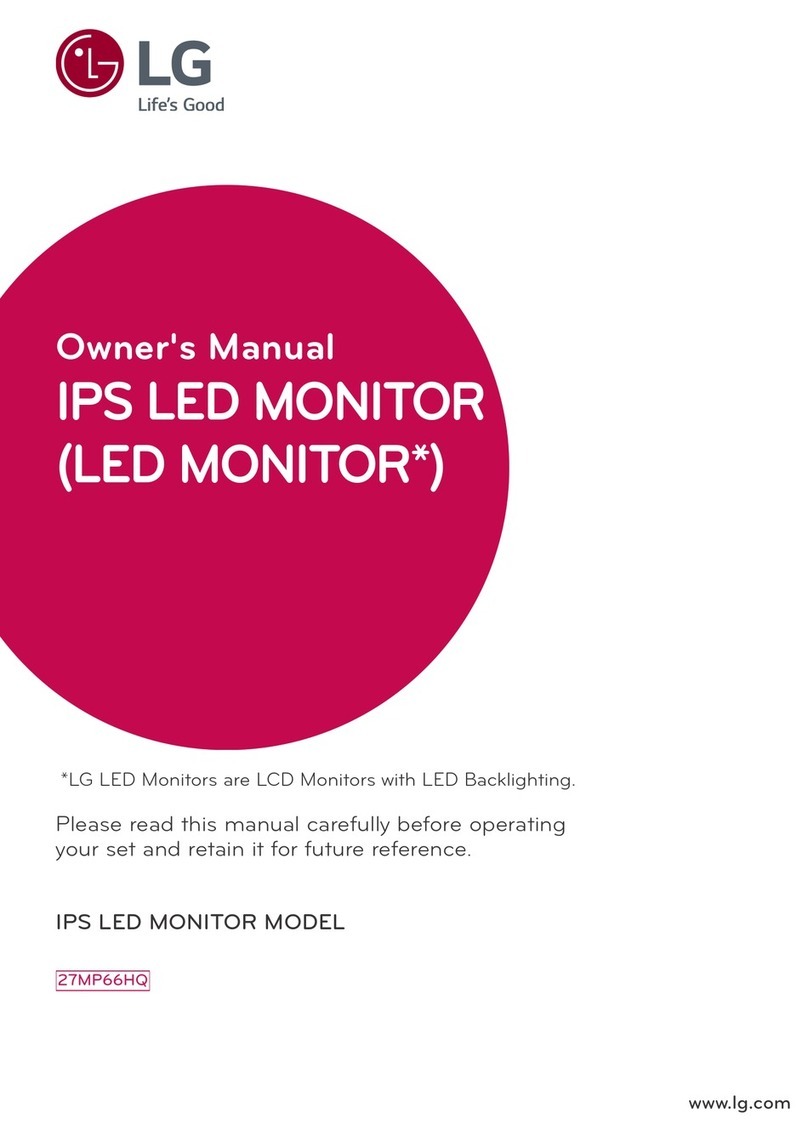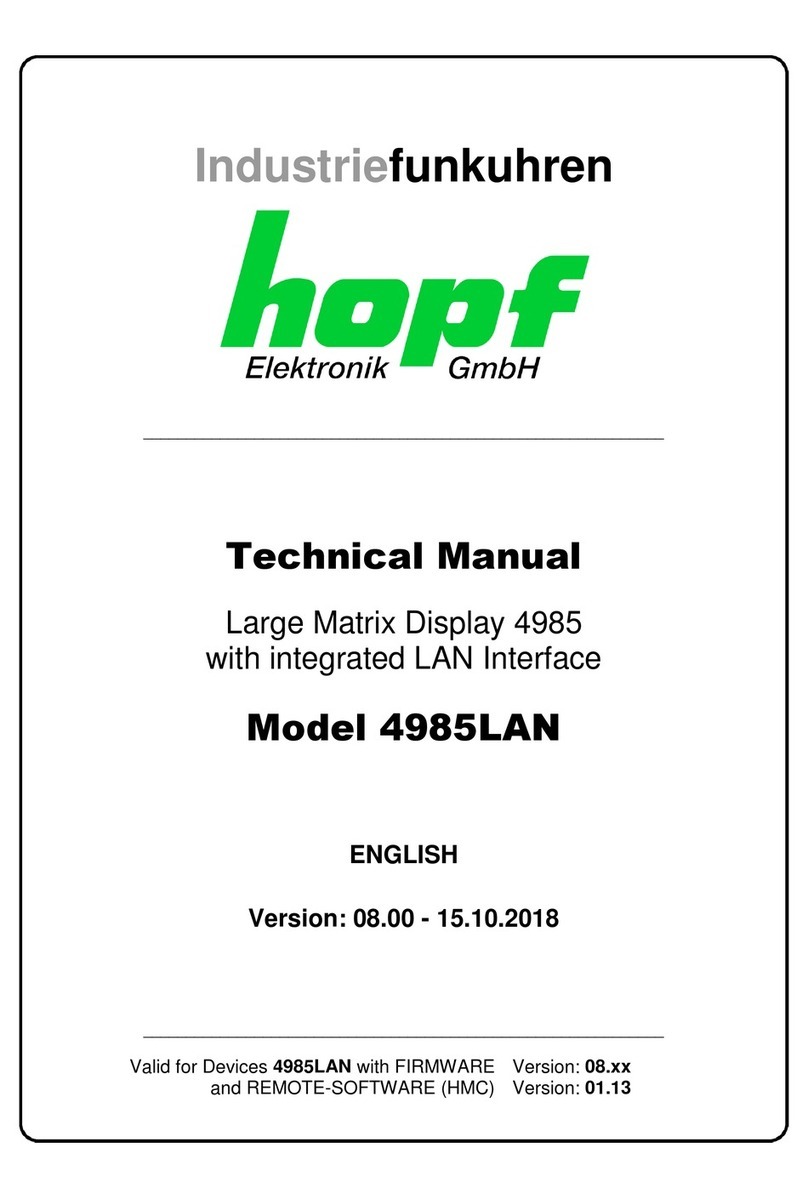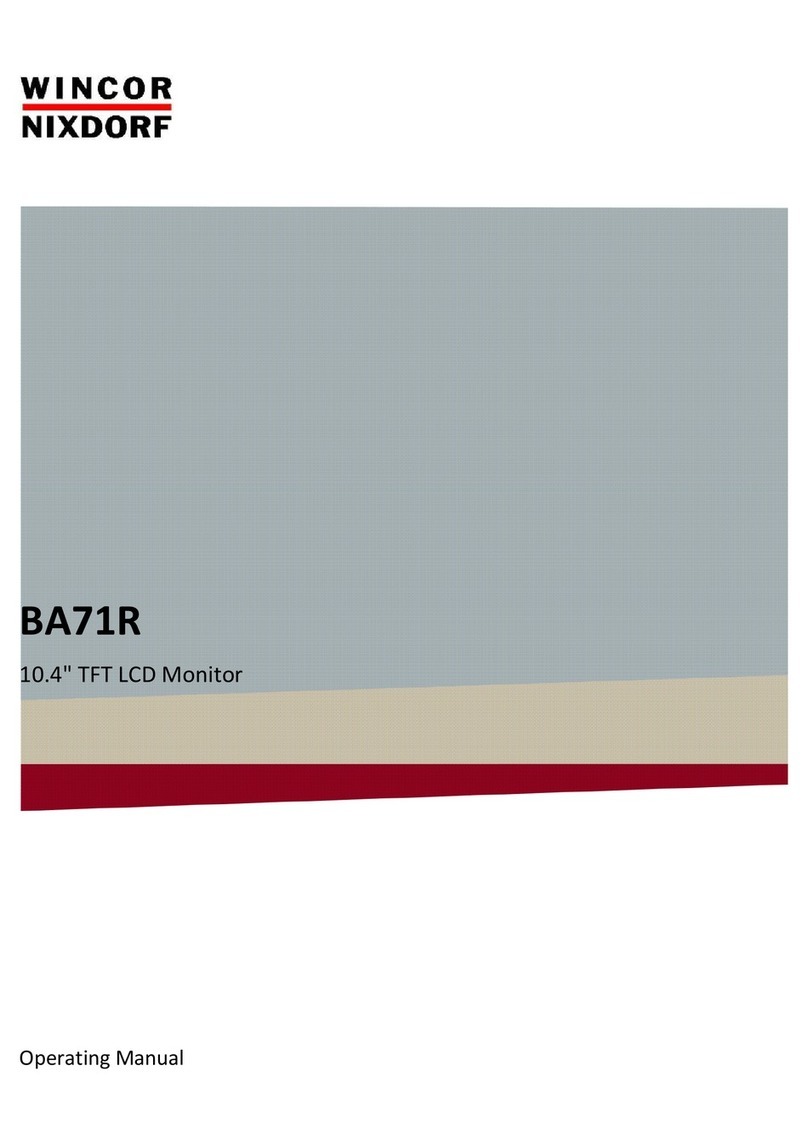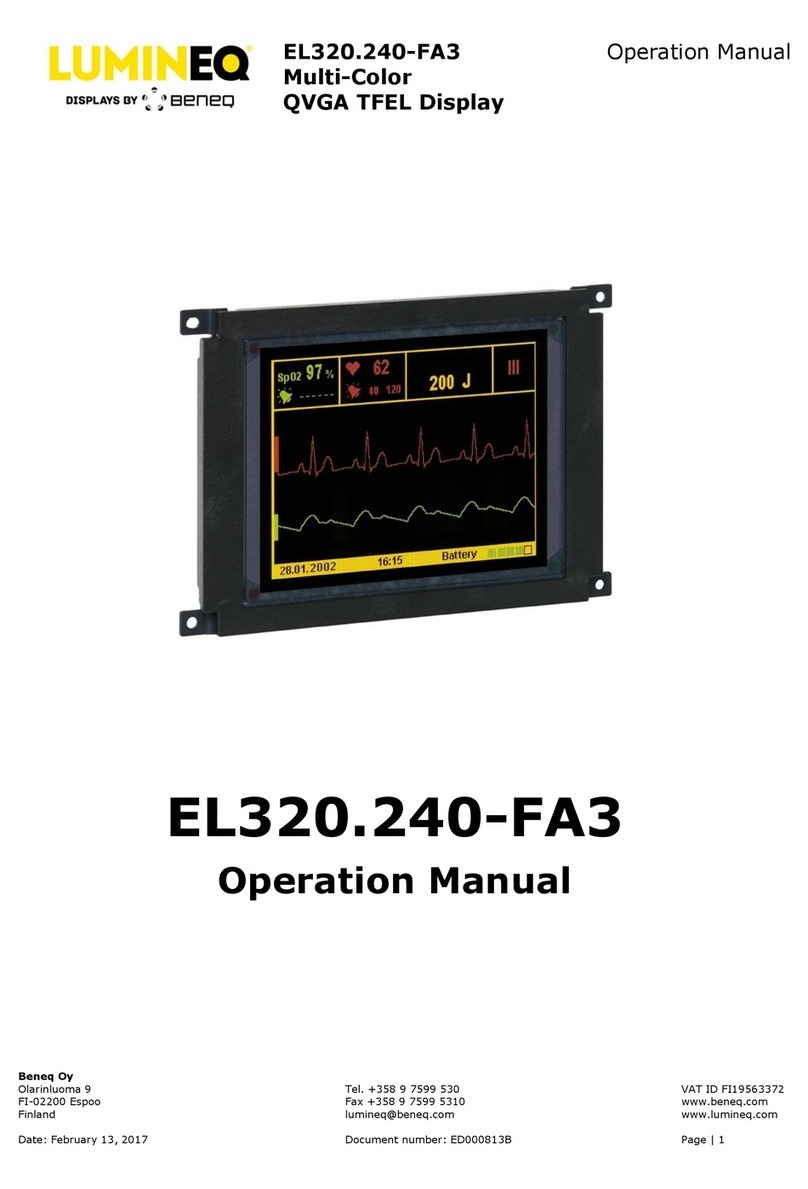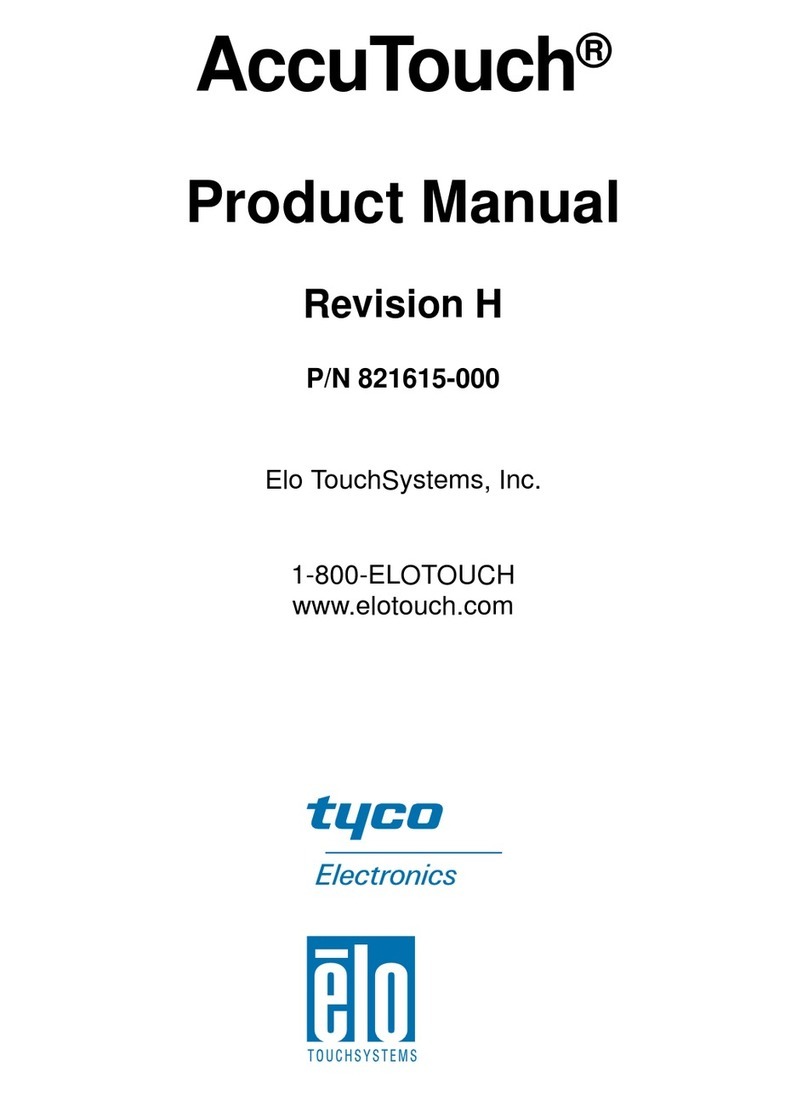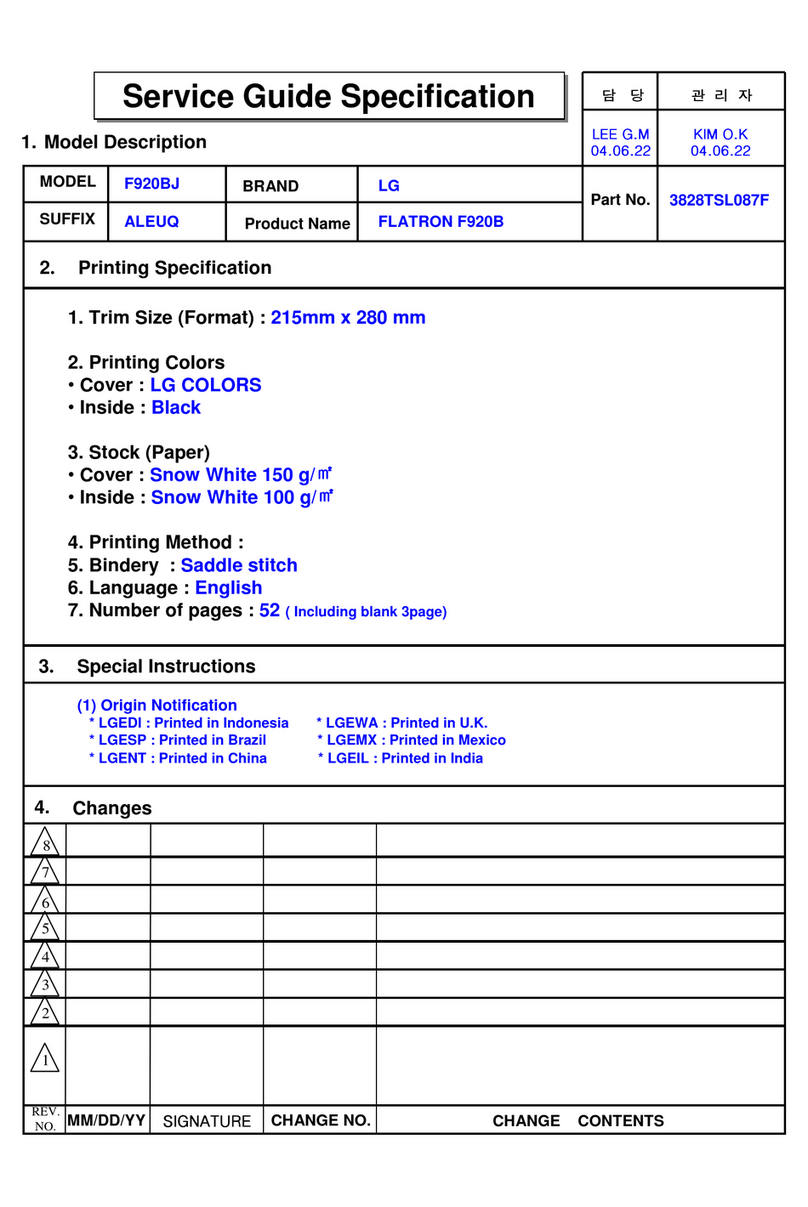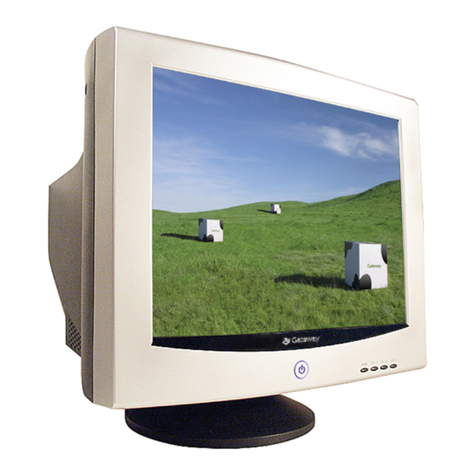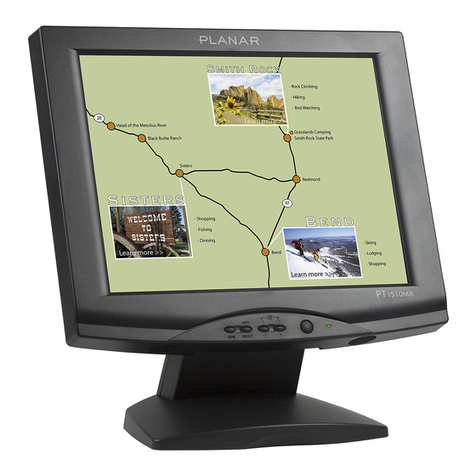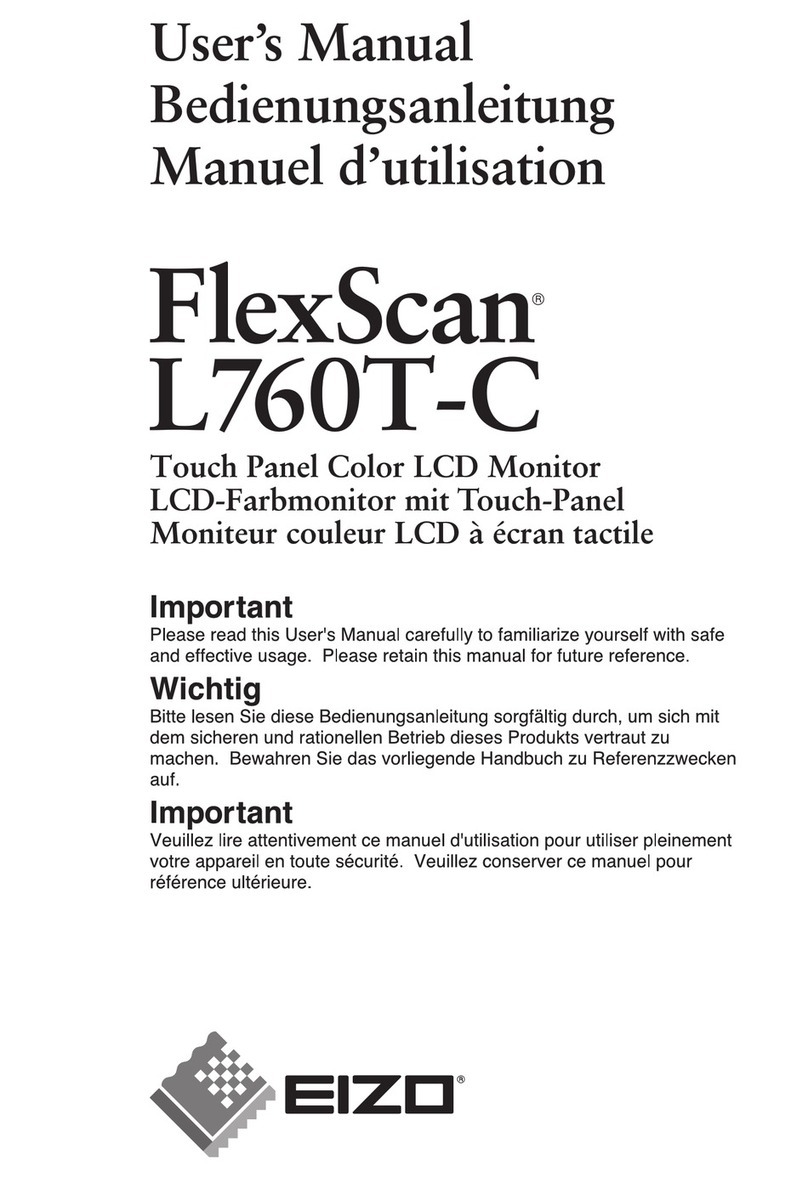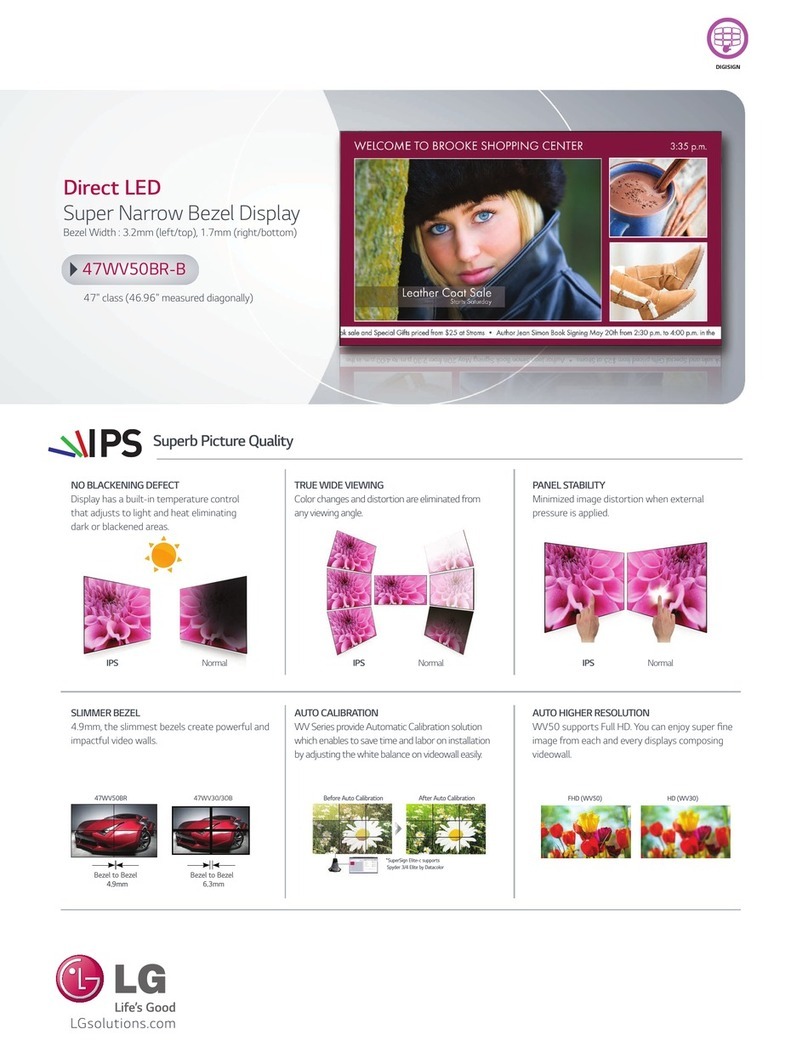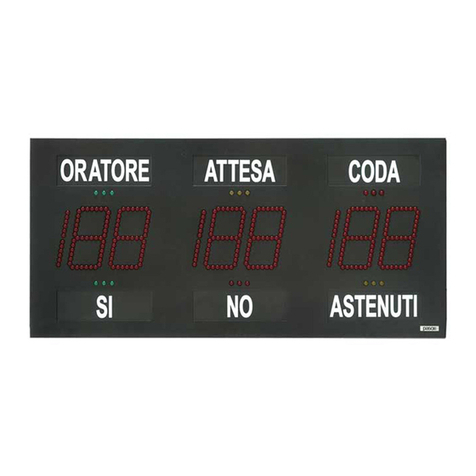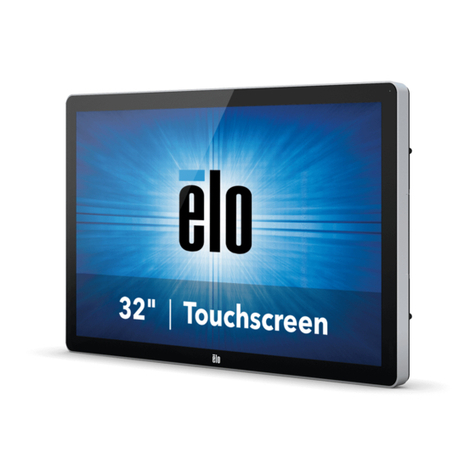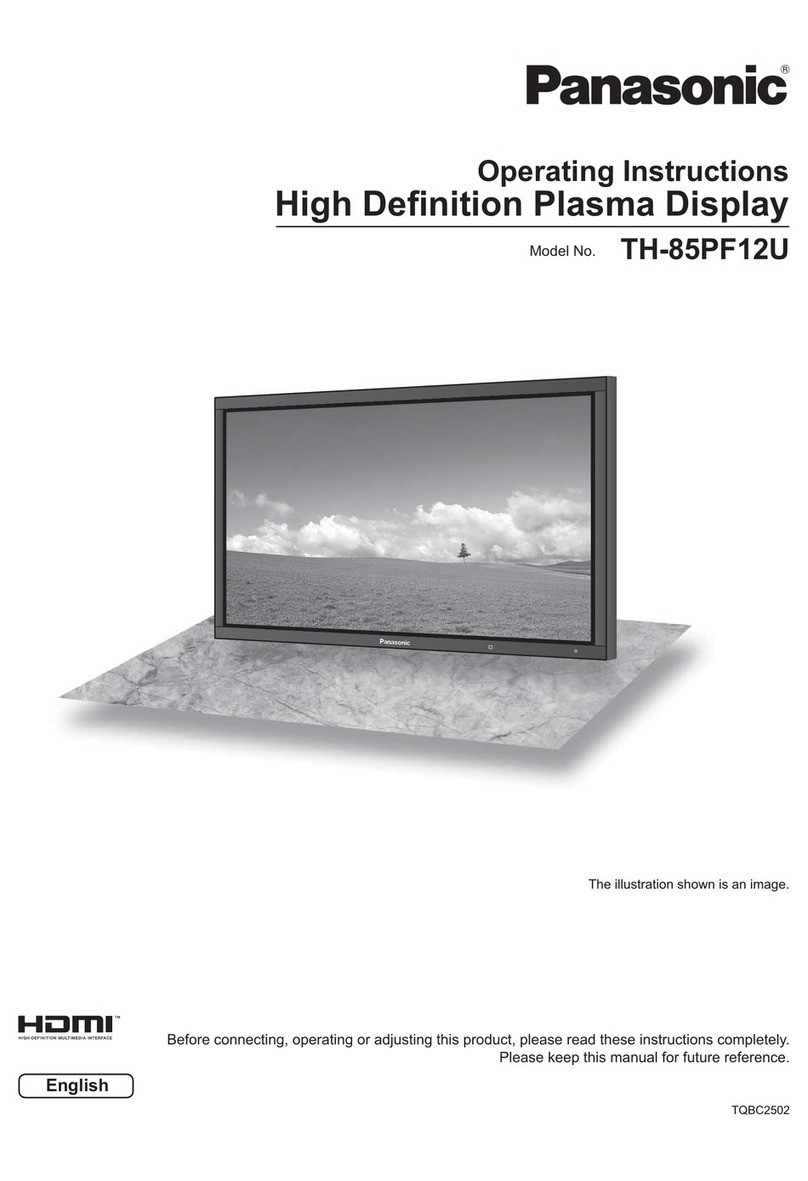Task Force Tips HURRICANE Programming manual

©Copyright Task Force Tips, Inc. 2008-2014 LIX-300 April 29, 2014 Rev18
MANUAL: HURRICANE
& HURRICANE RC MONITOR
See Remote Control (RC) Monitor Electrical Controls
Supplemental Instructions For Use With Hurricane RC Models
INSTRUCTIONS FOR INSTALLATION, SAFE OPERATION AND MAINTENANCE
DANGER Understand manual before use. Operation of this device without understanding the manual and
receiving proper training is a misuse of this equipment. Obtain safety information at www.tft.
com/serial-number
This Instruction Manual is intended to familiarize firefighters and maintenance personnel with the operation, servicing, and safety
procedures associated with this product. This manual should be kept available to all operating and maintenance personnel.
TASK FORCE TIPS, INC.
MADE IN USA • www.tft.com 3701 Innovation Way, Valparaiso, IN 46383-9327 USA
800-348-2686 • 219-462-6161 • Fax 219-464-7155
Hurricane Extended Hurricane
Hurricane Tiller for 4.5” Quick
Connect
and Valve Under Monitor
Hurricane Dual Handwheel
See Section 3.1 for Flow / Pressure
Operating Envelope

©Copyright Task Force Tips, Inc. 2008-2014 LIX-300 April 29, 2014 Rev18
2
Table Of Contents
1.0 Meaning of Safety Signal Words.............................................2
2.0 Safety ..............................................................................3
3.0 General Information...........................................................3-12
3.1 Mechanical Specifications
3.2 Part Identification and Models
3.3 Inlets and Outlets
3.4 Overall Dimensions
4.0 Installation .......................................................................12-17
4.1 Structural Requirements for Monitor Mounting
4.1.1 Water Supply
4.2 Inlet Mounting and Travel Ranges
4.2.1 Inlet Fitting or Extend-A-Gun RC Installation
4.2.2 Horizontal Rotation Travel Stops
4.2.3 Vertical RotationTravel Stops
4.3 Nozzle Installation
4.4 Pressure Gage Port
4.5 Automatic Drain
4.6 Handle Installation
5.0 Operation ............................................................................17
5.1 Horizontal Rotation Control
5.2 Elevation Control
5.3 Recommended Park Position
5.4 Override Knobs
6.0 Flows and Pressures........................................................18-21
6.1 Stacked Tips Flow and Reach
6.2 Automatic Masterstream Nozzles
6.3 Stream Straighteners
6.3.1 Stream Straighteners with Stacked Tips
6.3.2 Stream Straighteners with Fog Nozzles
7.0 Maintenance and Inspection.................................................22
7.1 Lubrication
7.1.1 Elevation Control Worm Gear
7.1.2 Horizontal Rotation Worm Gear
8.0 Troubleshooting ....................................................................22
9.0 Drawings and Parts List...................................................23-35
9.1 Hurricane Fixed (XFI Series)
9.2 Hurricane Fixed Extended (XFIBE Series)
9.3 Hurricane Dual Handwheel (XFIH-D Series)
9.4 Hurricane Tiller for 4.5” Quick Connect and V.U.M.
(XFIH-T Series)
9.5 Hurricane RC Monitor (XFIH-E Series)
9.6 Elevation Chain DriveAssembly
9.7 Gear MotorAssembly
9.8 Monitor Control BoxAssembly
10.0 Warranty ............................................................. Back Cover
1.0 MEANING OF SAFETY SIGNAL WORDS
Asafety related message is identified by a safety alert symbol and a signal word to indicate the level of risk involved with a particular
hazard. Per ANSI standard Z535.6-2011, the definitions of the four signal words are as follows:
DANGER DANGER indicates a hazardous situation which, if not avoided, will result in death or serious
injury.
WARNING WARNING indicates a hazardous situation which, if not avoided, could result in death or serious
injury.
CAUTION CAUTION indicates a potentially hazardous situation which, if not avoided, could result in minor
or moderate injury.
NOTICE NOTICE is used to address practices not related to physical injury.
DANGER
PERSONAL RESPONSIBILITY CODE
The member companies of FEMSA that provide emergency response
equipment and services want responders to know and understand the
following:
1. Firefighting and Emergency Response are inherently dangerous activities
requiring proper training in their hazards and the use of extreme caution
at all times.
2. It is your responsibility to read and understand any user’s instructions,
including purpose and limitations, provided with any piece of equipment
you may be called upon to use.
3. It is your responsibility to know that you have been properly trained in
Firefighting and /or Emergency Response and in the use, precautions, and
care of any equipment you may be called upon to use.
4. It is your responsibility to be in proper physical condition and to maintain
the personal skill level required to operate any equipment you may be
called upon to use.
5. It is your responsibility to know that your equipment is in operable
condition and has been maintained in accordance with the manufacturer’s
instructions.
6. Failure to follow these guidelines may result in death, burns or other
severe injury.
FEMSA
Fire and Emergency Manufacturers and Service Association
P.O. Box 147, Lynnfield, MA 01940 • www.FEMSA.org

©Copyright Task Force Tips, Inc. 2008-2014 LIX-300 April 29, 2014 Rev18
3
2.0 SAFETY
The operation of this monitor can be dangerous. The following must be observed at all times.
WARNING Injury or death may occur by attempting to use a damaged monitor. Before using the monitor
inspect it for damage resulting from:
• Failure to drain monitor followed by exposure to freezing conditions
• Exposure of monitor to temperatures in excess of 160 degrees F
• Structural damage caused by over-pressurization
• Missing parts, physical abuse, exposure to severe chemicals
• Deformed or cracked flanges damaged as a result of improper installation
- Excessive bolt torque
- Wrong tightening sequence
WARNING Injury can result from an inadequately supported monitor. The monitor mount must be capable of
supporting 940 lbs (430 kg) of nozzle reaction force.
WARNING The stream exiting a monitor is very powerful and capable of causing injury and property damage.
Make sure the monitor is securely attached to the base and pointing in a safe direction before
water to the monitor is turned on. Use care in directing the stream.
WARNING The monitor may be damaged if frozen while containing sufficient amounts of water. Such damage
may be difficult to detect visually and can lead to possible injury or death. Any time the monitor is
subject to possible damage from freezing, it must be hydrostatically tested by qualified personnel
before being considered safe for use.
CAUTION The electric Hurricane RC may be remotely operated. The electric drives are current limited but
may still produce enough force to cause injury. Keep hands and fingers away from pinch points
on the monitor.
CAUTION Do not use the manual override knobs while the electric controls are in operation. The electric
drives produce enough torque to cause injury.
CAUTION Maximum flow and pressure is 1250 gpm (5000 l/min) and 200 psi (14 bar). See Section 3.1B.
Damage or injury may result if the monitor is operated beyond these limits.
CAUTION On many vehicle installations, the monitor is the highest point on the apparatus. Be sure there
is sufficient clearance to safely pass under any doors or overhead obstructions. Always check
parked position of the monitor before moving.
NOTICE Use with salt water is permissible provided the monitor is thoroughly cleaned with fresh water
after each use. The service life of the monitor may be shortened due to the effects of corrosion
and is not covered under warranty.
3.0 GENERAL INFORMATION
The Task Force Tips HURRICANE Industrial Monitor based on our innovative and successful CROSSFIRE monitor is a very simple,
yet effective, fixed location master stream device. It is made ofANSIA356.0-T6 aluminum that has been hardcoat anodized and then
powder coated inside and out creating excellent corrosion resistance in the harshest environments.
The Task Force Tips HURRICANE RC is an electric remote monitor, with a single low-profile waterway discharge. It has high flow and
low friction loss characteristics. See Operating Envelope for pressure and flow capabilities. Maintains a FULL450° of rotational travel
(225° either side of center position). Field changeable horizontal rotation stops at 45°, 90° and 135° either side of center position.
Elevation range is 90° above horizontal and 45° below. Designed for auto sense 12 or 24 VDC operation. The Hurricane RC comes
with a factory installed control panel mounted on the monitor for controlling horizontal rotation, elevation and nozzle pattern. See Task
Force Tips Price List and Product Specifications for additional control stations. Unit comes with 30 feet of ultra-flexing robotic cable,
enclosed in a unique wire guide, already wired to the monitor so installation effort is minimized. Knobs are provided on the horizontal
rotation and elevation drive for manual override. TFT’s Master Stream 1250 nozzle plugs into the factory installed nozzle power
wire. All electrical components affecting water tightness are a minimum of NEMA 4 (IP65). Motors and control boxes are factory
tested for water tightness.Available with various inlet adapters for flanges and thread fittings. Inlet also made for direct connection to
TFT’s Extend-A-Gun RC3 or RC4. Standard outlet is 2-½” National Hose male (65mm). Other outlets are available (see figure 3.3).
A threaded port (0.25” NPT) (6.4mm) is provided for pressure gauge. The monitor is made from hardcoat anodized ANSI 356.0-T6
aluminum and silver powder coat finish inside and out.

©Copyright Task Force Tips, Inc. 2008-2014 LIX-300 April 29, 2014 Rev18
4
3.1 MECHANICAL SPECIFICATIONS
Manual Electric
US METRIC US METRIC
Weight 23 lbs 10.4 kg 39 lbs 17.7 kg
Min. Flow Area 7.07 in245.6 cm27.07 in245.6 cm2
Max Flow 1250 gpm 5000 l/min 1250 gpm 5000 l/min
Max Operating Pressure 200 psi 14 bar 200 psi 14 bar
Materials Used ANSI A356.0-T6 Aluminum, Stainless, Nylon
Maximum Torque Elevation 60 ft•lbs 80 n•m
Maximum Torque Horizontal 60 ft•lbs 80 n•m
Speed Elevation 9 deg/sec
Speed Horizontal 12 deg/sec
Fig 3.1A
Specifications
0
25
50
75
100
125
150
175
200
225
250
0 200 400 600 800 1000 1200 1400
0
4
8
12
16
0 1000 2000 3000 4000 5000
Monitor Loss
Nozzle C
Inlet Pressure
Nozzle B Inlet
Pressure
Nozzle D
Inlet Pressure
Nozzle A Inlet
Pressure
Hurricane Operating Envelope
Flow (gpm)
Monitor Inlet Pressure (psi)
Flow (lpm)
Monitor Inlet Pressure (bar)
Maximum Nozzle
Inlet Pressure
Maximum Monitor
Inlet Pressure
Nozzle A flows 500 gpm at 100 psi (7 bar), K factor = 50
Nozzle B flows 750 gpm at 100 psi (7 bar), K factor = 75
Nozzle C flows 1000 gpm at 100 psi (7 bar), K factor = 100
Nozzle D flows 1250 gpm at 100 psi (7 bar), K factor = 125
Fig 3.1B
Operating Envelope

©Copyright Task Force Tips, Inc. 2008-2014 LIX-300 April 29, 2014 Rev18
5
TFT HURRICANE FIXED MONITOR FRICTION LOSS
0.0
5.0
10.0
15.0
20.0
25.0
30.0
0
0
200
1000 2000 3000
400
4000 5000
600 800 1000 1200 1400 0
0.5
1.5
1.0
2.0
FLOW (GPM)
FLOW (L/min)
PRESSURE LOSS (BAR)
PRESSURE LOSS (PSI)
Fig 3.1B
Friction Loss
3.2 PART IDENTIFICATION AND MODELS
XFI-FPNJXFI-FPNJ
PRESSURE GAGE PORT
FLANGE
Fig. 3.2A
Hurricane Monitor
INLET
HANDLE
GREASE ZERK
ROTATION HANDLE
(TILLER BAR) BUILT IN STREAM
STRAIGHTNER
ELEVATION
HANDWHEEL
OUTLET
1/4" NPT PORT
FOR PRESSURE GAGE
ROTATION
LOCKING KNOB
GREASE ZERK
AUTOMATIC
DRAIN
SERIAL NUMBER
Fig. 3.2B
Hurricane Tiller (XFIH-T series)
for 4.5” Quick Connect and Valve Under Monitor

©Copyright Task Force Tips, Inc. 2008-2014 LIX-300 April 29, 2014 Rev18
6
3.2 PART IDENTIFICATION AND MODELS
INLET
GREASE ZERK
AUTOMATIC
DRAIN
BUILT IN STREAM
STRAIGHTNER
ELEVATION
HANDWHEEL
1/4" NPT PORT
FOR PRESSURE GAGE
HORIZONTAL
HANDWHEEL
GREASE ZERK
HANDLE
OUTLET
SERIAL NUMBER
Fig. 3.2C
Hurricane Dual Handwheel (XFIH-D series)
PRODUCT NAME LABEL
WITH SERIAL # & MODEL#
HORIZONTAL
ROTATION TRAVEL
STOP (5) PLACES
POWER CABLE
AUTOMATIC DRAIN
GREASE ZERK
ELEVATION DRIVE
HOUSING
BUILT IN STREAM
STREAM
STRAIGHTENER
OUTLET
WIRE SKIRT
CABLE GUIDE
CONTROL STATION BOX
WITH CONTROL BUTTONS
HORIZONTAL
MOTOR
GREASE ZERK
INLET STRAIGHT BACK
REFERENCE MARK
HORIZONTAL
ROTATION KNOB
PORT FOR
PRESSURE GAGE
ELEVATION
KNOB
HORIZONTAL
ROTATION TRAVEL
STOP (5) PLACES
Fig. 3.2D
Hurricane RC Monitor

©Copyright Task Force Tips, Inc. 2008-2014 LIX-300 April 29, 2014 Rev18
7
3.3 INLETS AND OUTLETS
MODEL INLET FITTING TYPE OUTSIDE
DIAMETER THICKNESS BOLT HOLE
CIRCLES NO. BOLT
HOLES SIZE OF
BOLTS TORQUE ON BOLTS
XFI-FL* 3” ANSI 150
(metric PN20) 7.5”
190mm .75”
20mm 6.0”
152.5mm 4
45/8”
M16 76-80 FT-LBF
100-110 Newton Meters
XFI-FP* 4” ANSI 150
(metric PN20) 9.0”
230mm 94”
23mm 7.5”
190.2mm 8
85/8”
M16 76-80 FT-LBF
100-110 Newton Meters
XFIH-E1*A 3” ANSI 125/150
(metric DN8 PN20) 7.5”
190mm .75"
20mm 6.0"
152.5mm 4
45/8"
M16 76-80 FT-LBF
100-110 Newton Meters
XFIH-E2*A 4" ANSI 150
(metric DN100 PN20) 9.0"
230mm .94"
23mm 7.5"
190.2mm 8
85/8"
M16 76-80 FT-LBF
100-110 Newton Meters
XFIH-E4*A metric DN80, PN16 200 mm 22 mm 160 mm 8 16 mm 100-110 Newton Meters
XFIH-E5*A metric DN100, PN16 220mm 22 mm 180 mm 8 16 mm 100-110 Newton Meters
XFIH-*6*A 3" NPT Female 4.40" (111.8mm) NA NA NA NA NA
XFIH-*7*A 4" NPT Female 5.40" (137.2mm) NA NA NA NA NA
XFIH-*8*A 3" BSP Male 4.40" (111.8mm) NA NA NA NA NA
XFIH-*9*A 4" BSP Male 5.40" (137.2mm) NA NA NA NA NA
XFIH-*L*A Extend-A-Gun RC3 3.94" (94.6mm) NA NA NA NA NA
XFIH-*P*A "Extend-A-Gun RC4 or
Valve Under Monitor" 4.94"
123.5mm NA NA NA NA NA
XFIH-*Q*A "4.5"" Quick Connect
(without inlet adapter)" 6.75"
(171.5mm) NA NA NA NA NA
XFIH-*R*A "4.5"" Quick Connect with
4""ANSI 150/DN100 PN16" 9.0"
230mm .94”
23mm 7.5 / 7.09
190/180mm 8
85/8
16mm 76-80 ft-lbf
(100-110 Nm)
XFIH-*S*A "4.5"" Quick Connect with
4""NPT female inlet adapter" 5.40"
137.2mm NA NA NA NA NA
XFIH-*T*A "4.5"" Quick Connect for
Extend-A-Gun RC3" 4.25"
108mm NA NA NA NA NA
XFIH-*U*A "4.5"" Quick Connect for
Extend-A-Gun RC4" 5.36"
136.1mm NA NA NA NA NA
* These digits in the model number refer to exit thread size and type.
Fig 3.3A
Inlet Flange Size Specifications
The standard Hurricane RC Monitor inlet is CODE-RLF for direct connection to TFT’s Extend-A-Gun RC3. Monitor inlet CODE-RPF
is available for direct connection to Extend-A-Gun RC4. The standard outlet is 2-½”-7.5 National Hose male. Various other inlet and
outlet fittings are available as shown in Figure 3.3B.
2.5"-7.5 NH
(65mm) MALE 2.5"-11 BSP
(65mm) MALE
SPECIAL
THREADS
BASE INLET OPTIONS:
CODE-RLF (3"), CODE-RPF (4")
or 4.5" QUICK CONNECT
(see LIY-250 for options)
FEMALE PIPE THREAD
3.0" NPT (Y4440NL)
4.0" NPT (Y4450NP)
MALE BSP THREAD
3.0"BSP (Y4420A)
4.0"BSP (Y4430A)
FLANGE
3.0"ANSI 150 (Y4410A)
4.0"ANSI 150 (Y4415A)
DN80, PN16 (Y4423A)
DN100, PN16 (Y4425A)
VALVE UNDER
MONITOR
with CODE-RPM outlet
(see LIA-285 for options)
EXTEND-A-GUN RC3 or RC4
(see LIX-530 for options)
INLET ADAPTER OPTIONS
Fig 3.3B
Inlets and Outlets

©Copyright Task Force Tips, Inc. 2008-2014 LIX-300 April 29, 2014 Rev18
8
3.4 OVERALL DIMENSIONS
3" ANSI 150 Flange
(compatible with metric PN20)
hurricane
GREASE ZERK FOR
HORIZONTAL SWIVEL
GREASE
ZERK
FOR
WORM
GEAR
MAXIMUMOPERATING PRESSURE
250PSI - 17 BAR
+1.219.462.6161
800.348.2686
www.tft.com
XL105
SERIAL#TFT-X123456
hurricane
Readmanualbefore use.
WARNING
Æ
DOWN UP
Fig 3.4A
Hurricane Fixed Monitor Overall Dimensions
w/3” ANSI 150 Flange
4" ANSI 150 Flange
(compatible with metric PN20)
hurricane
GREASE ZERK FOR
HORIZONTAL SWIVEL
GREASE
ZERK
FOR
WORM
GEAR
MAXIMUMOPERATING PRESSURE
250PSI - 17 BAR
+1.219.462.6161
800.348.2686
www.tft.com
XL105
SERIAL#TFT-X123456
hurricane
Readmanualbefore use.
WARNING
Æ
DOWN UP
Fig 3.4B
Hurricane Fixed Monitor Overall Dimensions
w/4” ANSI 150 Flange

©Copyright Task Force Tips, Inc. 2008-2014 LIX-300 April 29, 2014 Rev18
9
3" NPT Female Inlet
hurricane
GREASE ZERK FOR
HORIZONTAL SWIVEL
GREASE
ZERK
FOR
WORM
GEAR
MAXIMUMOPERATING PRESSURE
250PSI - 17 BAR
+1.219.462.6161
800.348.2686
www.tft.com
XL105
SERIAL#TFT-X123456
hurricane
Readmanualbefore use.
WARNING
Æ
DOWN UP
Fig 3.4C
Hurricane Fixed Monitor Overall Dimensions
w/3” NPT Female Inlet
hurricane
3" or 4" ANSI 150 Flange
Extended Monitor
Fig 3.4D
Hurricane Fixed Extended Monitor Overall Dimensions
w/3” or 4” ANSI 150 Flange

©Copyright Task Force Tips, Inc. 2008-2014 LIX-300 April 29, 2014 Rev18
10
16.5" [418mm]
WITHOUT
INLET FITTING
(SEE FIG 3.4H FOR
ADDITIONAL
HEIGHTS)
3.4"
[87mm]
21.7"
[551mm]
11.3"
[286mm]
10.4"
[265mm]
5.7"
[144mm]
9.7"
[246mm]
6.0"
[152mm]
15.7"
[398mm]
45°
BELOW
90°
ABOVE
360° CONTINUOUS
RANGE OF MOTION
R11.3"
[R287mm]
SWING RADIUS
hurricane
Fig 3.4F
Hurricane Dual Handwheel Overall Dimensions
(XFIH-D series)
9.7"
[246mm]
4.4"
[111mm]
14.0"
[357mm]
1.4"
[36mm]
3.7"
[93mm] 45°
BELOW
90°
ABOVE
32.8"
[833mm]
11.3"
[286mm]
10.4"
[265mm]
14.5" [367mm]
WITHOUT
INLET FITTING
(SEE FIG 3.4H FOR
ADDITIONAL
HEIGHTS)
4.2"
[105mm]
360° CONTINUOUS
RANGE OF MOTION
R11.3"
[R287mm]
SWING RADIUS
hurricane
Fig 3.4G
Hurricane Tiller Overall Dimensions
(XFIH-T series)

©Copyright Task Force Tips, Inc. 2008-2014 LIX-300 April 29, 2014 Rev18
11
SHOWN
WITHOUT
INLETFITTING
(SEE FIG 3.4F
FOR
ADDITIONAL
HEIGHTS)
16.24
[413MM]
15.43
[392MM]
5.50
[140MM]10.74
[273MM]5.89
[150MM]
3.64
[93MM]
V
E
R
T
I
C
A
L
R
A
N
G
E
O
F
M
O
T
I
O
N
A
B
O
V
E
4
5
D
E
G
.
B
E
L
O
W
9
0
D
E
G
.
hurricane rc
Fig 3.4E
Hurricane RC Overall Dimensions

©Copyright Task Force Tips, Inc. 2008-2014 LIX-300 April 29, 2014 Rev18
12
MODEL INLET FITTING TYPE ADDITIONAL HEIGHT
XFIH-*1*A 3” ANSI 125/150
(metric DN8 PN20) .75” (20mm)
XFIH-*2*A 4" ANSI 150
(metric DN100 PN20) .94” (23mm)
XFIH-*4*A metric DN80, PN16 2.80” (22mm)
XFIH-*5*A metric DN100, PN16 2.80” (22mm)
XFIH-*6*A 3" NPT Female 2.00” (51mm)
XFIH-*7*A 4" NPT Female 1.75” (45mm)
XFIH-*8*A 3" BSP Male 2.30” (58mm)
XFIH-*9*A 4" BSP Male 2.30” (58mm)
XFIH-DQ*A
XFIH-EQ*A 4.5" Quick Connect 0.63" (16mm) + inlet adapter **
XFIH-TQ*A 4.5" Quick Connect 3.38" (86mm) + inlet adapter **
* These digits in the model number refer to control type and to exit thread type.
** Use height from inlet adapter drawings (YQC series) to determine overall height
of monitor with Quick Connect.
Fig 3.4H
Overall Height increase for inlet fittings on
Hurricane RC (XFIH-E), Dual Handwheel (XFIH-D) and Tiller (XFIH-T)
4.0 INSTALLATION
See LIY-500 Remote Control (RC) Monitor Electrical Controls Supplemental Instructions for use with Hurricane RC Models.
See LIY-250 Quick Connect Supplemental Instructions for installation of Quick Connect Inlet Adapters.
4.1 STRUCTURAL REQUIREMENTS FOR MONITOR MOUNTING
The structure that the Hurricane Monitor is mounted to must withstand
the internal pressure of the monitor as well as shear and bending
forces due to nozzle reaction. Nozzle reaction can be as high as 940
lbs (430 kg).
For flanged connections, the use of flat flanges without raised faces
is recommended. Use a ring gasket as defined in ASME 16.21 or ISO
7483. Tighten flange bolts in an alternating sequence as shown in
figure 4.1. Tighten to 76-80 ft-lb (100-110 Newton-Meters).
1
2
34
1
2
3
5
6
7
8
4
Fig 4.1 Flange Bolt Tightening Sequence
WARNING Injury can result from an inadequately supported monitor. The monitor mount must be capable
of supporting the nozzle reaction force which can be as high as 940 lbs (430 kg). Flanges and
pipe made from plastic are inadequate for monitor mounting and must not be used. This monitor
is not recommended for portable use.
4.1.1 WATER SUPPLY
The HURRICANE Monitor is mounted on a riser pipe by a bolted flange joint. Make sure that the area around the monitor is free
from obstructions which would limit its range of motion and usefulness. If a valve is mounted under the HURRICANE, make sure
the monitor will not interfere with the valve handle. If a butterfly valve is mounted under the monitor make sure that the butterfly
valve assembly does not interfere with the flanged base of the HURRICANE.
4.2 INLET MOUNTING AND TRAVEL RANGES
4.2.1 INLET FITTING OR EXTEND-A-GUN RC INSTALLATION
The Hurricane RC Monitor is available with various inlet fittings as shown in figure 3.3B. The Hurricane RC Monitor also connects
directly to TFT’s Extend-A-Gun RC3 or RC4. The fittings and Extend-A-Gun RC are attached to the monitor by means of a threaded
joint with an o-ring seal. Two different methods of rotational locking between the Monitor Base and the Inlet adapter or Extend-A-Gun
Inner Tube exist. One method relies on two ¼-28 Button Head Cap Screws, and the other, newer version, uses a two-piece Clamp
that is held together with #10 Cap Screws and Cylindrical nuts. The rotational locking method employed can be identified by the
presence or absence of two threaded cross-holes, 180 degrees apart in the threaded portion of the Inlet Adapter or Extend-A-Gun
Inner Tube, where the monitor screws on. If ¼-28 Screws are needed, there will be ¼-28 threaded cross-holes in the threaded portion
of the Inlet Adapter or Extend-A-Gun Inner Tube. If Clamps are needed, there will be no ¼-28 threaded cross-holes in the threaded
portion of the Inlet Adapter or Extend-A-Gun Inner Tube. Once the necessary rotational locking method is determined, install the
monitor using one of the following procedures.

©Copyright Task Force Tips, Inc. 2008-2014 LIX-300 April 29, 2014 Rev18
13
TWO PIECE CLAMP ROTATIONAL LOCK INSTALLATION INSTRUCTIONS (without tapped holes):
1) Assemble Clamps and place loosely on Inlet Adapter or Extend-A-
Gun.
A) Apply VSA-125 blue Loctite to threads on Cylinder Nut.
B) Loosely install Screws, Washers and Cylinder Nuts on Clamp.
C)GroovesonheadsofCylinderNuts indicatealignmentofthreaded
holes.
D) Place Clamp assembly over male threads of outlet.
E) Heads of Cylinder Nuts must be on top side of Clamps.
2) Screw monitor onto InletAdapter or Extend-A-Gun RC until threaded
joint bottoms out.
A) MAKE SURE THE CLAMPS ARE NOT TIGHT ENOUGH TO
PREVENT THE MONITOR BASE FROM BOTTOMING OUT. The
monitor will leak if it does not bottom out in this step.
B) DO NOT USE PIPE SEALANT OR LOCTITE ON THE INLET
BASE THREADS. These threads are sealed with an O-ring. The
use of thread locking compounds will make removal difficult.
3) Unscrew monitor until the “Straight Back Reference Mark” is facing
the desired direction.
A) Monitor may be unscrewed up to one full turn from the bottomed
out position.
B) MONITOR WILL LEAK IF UNTHREADED MORE THAN ONE
FULL ROTATION FROM BOTTOMED-OUT CONDITION.
4) Rotate the Clamps to the desired orientation.
A) Ensure that Clamp assembly does not interfere with RC monitor
Power/Com Cable.
4) Tighten each Screw gradually until both are finger tight with
approximately equal spacing between opposite ends of Clamps.
5) Carefully tighten each Screw one additional turn using a 5/32
hex wrench by alternating to the opposite Screw in half turn
increments.
A) OVER TIGHTENING THE SCREWS WILL DAMAGE SCREWS
AND CLAMPS.
BACK OF MONITOR
REFERENCE MARK
(MONITOR'S CENTER
OF ROTATION IS 180°
FROM THIS MARK)
MONITOR INLET
10-32 X 1 1/4 LONG
SOCKET HEAD SCREW
VT10-32SH1.2
(2) PLACES
WASHER
VW360X200-04
(2) PLACES
INLET FITTING MOUNTED
TO EXTEND-A-GUN
OTHERS ARE SIMILAR
CHAMFER MATES
WITH TOP OF CLAMP
CHAMFER MATES
WITH BOTTOM OF CLAMP
CYLINDER NUT
Y4437
(2) PLACES
WIRE SKIRT NOT SHOWN
FOR ILLUSTRATION PURPOSES
MONITOR BASE CLAMP
(2) PLACES
EQUAL
SPACING
1 TURN PAST
FINGER TIGHT
¼-28 BUTTON HEAD CAP SCREW ROTATIONAL LOCK INSTALLATION INSTRUCTIONS (tapped holes):
1) Install InletAdapter or Extend-A-Gun RC to apparatus.
Mount so that 180 degree apart threaded cross-holes
will give desired direction relative to the “Straight Back
Reference Mark” when the monitor is installed.
2) Screw monitor onto InletAdapter or Extend-A-Gun RC
until threaded joint bottoms out.
A) Do not use pipe dope or Loctite on the Inlet Base
threads. These threads are sealed with an O-ring. The
use of thread locking compounds will make removal
difficult.
3) Unscrew monitor until a pair of 90 degree apart slots
line up with the 180 degree apart threaded cross-holes
in the Inlet Adapter or Extend-A-Gun RC.
A) Orient monitor so that the “Straight Back Reference
Mark” is facing the desired direction.
B) Slots will line up with threaded cross-holes every 90
degrees of rotation.
C) Monitor may be unscrewed up to one full turn from
the bottomed out position.
4) Install ¼-28 by ½ long Button Head Cap Screws
and Washers in the two threaded cross- holes. If the
threads are not wrapped with teflon tape, use Loctite
#271 on the threads of the Button Head Cap Screws.
Allow Loctite to fully cure before applying water
pressure. (This version shown without power cable guide for purposes of illustration)
90° Apart
Slots
180° Apart Tapered Holes
Inlet Base
Inlet Fitting Mounted To Apparatus
3” ANSI 150 shown. Others Similar
1/4-28X1/2 Long
BUTTONHEADCAP SCREW
2PLA
CES
(TFT#VT25-28BH500)
Washer
2 places
(TFT#VW687X281-50)
Straight Back
Reference Mark
Fig 4.2.1A
3” Inlet Fitting Connection

©Copyright Task Force Tips, Inc. 2008-2014 LIX-300 April 29, 2014 Rev18
14
The Extend-A-Gun RC manual override knob may be mounted in any one of four possible orientations (90 degrees apart).
NOTE:
WIRE NOT
WRAPPED
MANUAL OVERRIDE
KNOB ON
EXTEND-A-GUN
NOTE:
CORRECT
WIRE WRAP
CORRECT WIRE WRAP NOT CORRECT
Fig 4.2.1B Extend-A-Gun RC Mounting
The Extend-A-Gun manual override knob may be mounted in any of four possible orientations (90 degrees apart) relative to the
Straight Back Reference Mark on the monitor.
NOTE: Hurricane RC monitor, for use with Extend-A-Gun RC, comes with the wire installed in a nylon tube. The nylon tubing gives
the wire additional stiffness so it better follows as the Extend-A-Gun RC extends or retracts.Afitting is also supplied and is to be used
where the nylon tubing and wire pass though the deck.

©Copyright Task Force Tips, Inc. 2008-2014 LIX-300 April 29, 2014 Rev18
15
4.2.2 HORIZONTAL ROTATION TRAVEL STOPS
The range of Horizontal (left-right) travel for the Hurricane RC monitor is limited to 450 degrees or 225 degrees from either side of
a nozzle discharge position. Horizontal (left-right) travel stop bolts may be installed in the monitor to limit travel as shown in figure
4.2.2Aand 4.2.2B. Note that left and right are relative to the “Straight Back Reference Mark” shown in figure 4.2.2A, and refer to the
operator’s position behind the monitor, opposite the nozzle’s discharge direction. Also, Figure 4.2.2A shows the range of travel for
the various stop bolt locations along with installation notes as shown in Figure 4.2.2B. Horizontal travel for the Hurricane is shown
in figure 4.2.2C.
LOCATION OF
STRAIGHT BACK
REFERENCE MARK
Fig 4.2.2A
Horizontal Travel Limits
90° LEFT
135° LEFTAND RIGHT
(ONLY ONE STOP BOLT
NEEDED FOR THIS
TRAVEL LIMIT)
45° LEFT
STRAIGHT BACK
REFERENCE MARK
90° RIGHT
45° RIGHT
ADJUSTMENT DISK, Y3146
INSTALL ON THIS SIDE OF STOP BOLT TO
REDUCE TRAVEL TO LEFT BY APPROX. 8°
FOR EACH DISK INSTALLED. INSTALLDISKS
ON OTHER SIDE TO REDUCE TRAVELTO RIGHT.
SET SCREW
#VT37-24SS375
REMOVE SETSCREW AND
INSTALL STOP BOLT TO OBTAIN
DESIRED TRAVEL LIMITS.
Fig 4.2.2B
Horizontal Travel Stop Bolt Locations Fig 4.2.2C
Hurricane Horizontal Travel

©Copyright Task Force Tips, Inc. 2008-2014 LIX-300 April 29, 2014 Rev18
16
4.2.3 VERTICAL ROTATION TRAVEL STOPS
The range of elevation travel for the Hurricane RC monitor is shown in Fig. 4.2.3A. The elevation range of travel may be reduced by
installing Adjustment Disks as shown in Fig. 4.2.3B. The range of elevation travel for the Hurricane monitor is shown in Fig 4.2.3C.
V
E
R
T
I
C
A
L
R
A
N
G
E
O
F
M
O
T
I
O
N
A
B
O
V
E
4
5
D
E
G
.
B
E
L
O
W
9
0
D
E
G
.
Install On This Side Of Stop Bolt To Reduce Downward
Travel ByApprox 10° For Each Disk Installed. Install
Disks On Other Side To Reduce Upward Travel.
STOP BOLT - X258
ADJUSTMENT DISK -Y3146
Fig 4.2.3A
Hurricane RC Vertical Travel Fig 4.2.3B Fig 4.2.3C
Hurricane Vertical Travel
4.3 NOZZLE INSTALLATION
The Hurricane Fixed Monitor is available with 2.5” male NH
or BSP threads to attach the nozzle. Simply screw the nozzle
onto the monitors exit threads.
The Hurricane RC monitor outlet thread types are as shown
in figure 3.3B. Insure that the nozzle’s coupling does not
make contact with the elevation drive housing when the
monitor is in its highest elevation position.
For nozzles with electric pattern control, a waterproof
connectorwireisprovidedatthebottomoutletoftheHurricane
RC’s control station box. This wire attaches directly to TFT’s
electric Masterstream 1250 nozzle. The electric actuator
box of nozzle must be oriented to the top side of nozzle for
the connection wire to extend 90° above horizontal and 45°
below elevation movement. (see figure 4.3 and refer to RC
Monitor Electrical Controls Supplemental Instructions (LIY-
500) for properly attaching female to male connectors). Any
other nozzle should have the corresponding male electrical
connector installed and long enough wire to extend 90°
above horizontal and 45° below elevation movement of the
nozzle. DO NOT CUT OFF THE FEMALE CONNECTOR
ON THE MONITOR. THIS CONNECTOR IS MOLDED
ONTO THE WIRE AND MUST REMAIN ON TO MAINTAIN
THE WATER TIGHTNESS OF THE ELECTRICALSYSTEM.
TFT’s Master Stream 1250 ER Nozzle
Electric Actuator Box must be on the TOP
Side for its Edge to line up with Monitor
Waterway Top Body, as shown.
NOTICE
Fig 4.3
Correct ER Nozzle Install Orientation
CAUTION The nozzle threads must match the threads of the Hurricane monitor in both size and type.
Mismatched or damaged threads may cause the nozzle to leak or uncouple under pressure and
could cause injury.
CAUTION Do not connect aluminum to brass or brass to aluminum. Dissimilar metals coupled together
can cause galvanic corrosion that will seize the threaded joint or cause complete loss of thread
engagement. If dissimilar metals must be coupled together, the effects of corrosion can be greatly
delayed by various coatings on the metal such as powder paint, hard anodizing, or silicone grease.

©Copyright Task Force Tips, Inc. 2008-2014 LIX-300 April 29, 2014 Rev18
17
4.4 PRESSURE GAGE PORT
There is a ¼” NPT female threaded hole located behind the elevation hand wheel for the installation of a pressure gage if desired.
This hole has a pipe plug installed from the factory. Unscrew the pipe plug and install the gage using pipe sealant. Make sure that
the gage does not interfere with the handwheel.
4.5 AUTOMATIC DRAIN
There is an automatic drain on the Hurricane and Hurricane RC installed from the factory, that will empty the water from the low point
of the lower bend to prevent freezing (Figure 3.2Aand 3.2B). The valve closes when the internal pressure is approximately 5 psi (0.3
bar) or above and opens when the internal pressure is below 5 psi (0.3 bar).
In areas that experience freezing, it is important that the automatic drain NOT be disabled. If however, there is no chance of freezing,
the following procedure will eliminate the drain valve function.
Refer to the appropriate exploded view in Section 9.0.
1) Unscrew the drain assembly from the monitor and remove the screw and washer.
2) Turn over the rubber drain valve so that the raised edge is facing down, against the face of the housing.
3) Reinstall the washer and screw. Reinstall the drain assembly.
A secondary drain valve should be installed on the monitor’s inlet piping to drain water in the riser.
4.6 HANDLE INSTALLATION
For the manual HURRICANE, the rotation handle must be attached to the monitor in order to complete the installation process.
Attach the handle with the supplied hardware. Use the loctite in the instruction packet to coat the threads of the mounting screws.
5.0 OPERATION
5.1 HORIZONTAL ROTATION CONTROL
The HURRICANE can rotate from side to side on its swivel base. Lift the rotation lock lever and rotate the monitor right or left using
the handle mounted on the top of the monitor. To lock the monitor in position depress the rotation lock lever. A small spring holds
the rotation lock lever in the unlocked position when it is disengaged. When the monitor is not in use, the rotation lock lever should
be kept in the locked position.
5.2 ELEVATION CONTROL
The hand wheel controls the nozzle elevation. Turn the hand wheel clockwise to raise the nozzle and counter clockwise to lower it.
5.3 RECOMMENDED PARK POSITION
For truck mounted applications, it is recommended that the monitor be parked in a position such that the monitor’s nozzle rests
against a bracket or support surface. This will minimize bouncing of the nozzle when the apparatus is traveling. Always be sure the
monitor is properly parked before moving the truck and know the overall height to avoid damage from overhead obstructions such
as doors or bridges.
On many vehicle installations, the monitor is the highest point on the apparatus. Often it is critical that the monitor be properly parked
before driving to avoid damage to overhead obstructions, such as door openings. In these cases, the use of a switch wired into the
apparatus’s “door open” circuit is highly recommended. The switch would be wired to give a “door open” signal if the monitor is not in
the parked position. Due to the variety of possible mountings and nozzles, it is the installer’s responsibility to supply the appropriate
switch with mounting and wire it into their system. Always check parked position of monitor before moving apparatus.
5.4 OVERRIDE KNOBS
In the event of electrical system failure of the monitor or fire truck,
the Hurricane RC is factory supplied with override knobs so the
monitor may be manually operated. To make the Hurricane RC
more compact, the override knobs may be removed. The drive
shafts have a hex so an 11/16” wrench or socket may be used for
manual override. Each drive shaft also has a secondary hex at
mid shaft so the shaft may be shortened by cutting and still have
a wrenching hex. The wrenching hexes are shown in figure 5.4.
Cut here to
shorten shaft
Cut here to
shorten shaft
11/16”
(18mm) Hex
Fig 5.4
Wrenching Hexes on Drive Shaft

©Copyright Task Force Tips, Inc. 2008-2014 LIX-300 April 29, 2014 Rev18
18
6.0 FLOWS AND PRESSURES
The Hurricane and Hurricane RC monitor is designed for a maximum pressure of 200 psi (14 bar). See section 3.1 for flow pressure
operating envelope. Do not exceed these limits.
WARNING The stream exiting a monitor is very powerful and capable of causing injury and property damage.
Make sure the monitor is securely attached to the base and pointing in a safe direction before
water to the monitor is turned on. Use care in directing the stream.
Because the stream trajectory can obscure the view of the operator, it is recommended that a spotter be used to accurately direct
the stream.
6.1 STACKED TIPS FLOW AND REACH
INLET PRESSURE (PSI)
NOZZLE
DIAMETER
(inches)
40 60 80 100
FLOW
(GPM) REACTION
(LBS) FLOW
(GPM) REACTION
(LBS) FLOW
(GPM) REACTION
(LBS) FLOW
(GPM) REACTION
(LBS)
1.375 360 120 440 180 500 240 560 300
1.50 420 140 520 210 600 280 670 350
1.75 580 190 700 290 810 380 910 480
2.00 750 250 920 380 1000 500 1190 630
INLET PRESSURE (BAR)
NOZZLE
DIAMETER
(MM)
2.8 4.1 5.5 7
FLOW
(l/min) REACTION
(KG) FLOW
(l/min) REACTION
(KG) FLOW
(l/min) REACTION
(KG) FLOW
(l/min) REACTION
(KG)
35 1360 50 1670 80 1890 110 2120 140
38 1590 60 1970 100 2270 130 2540 160
45 2200 90 2650 130 3070 170 3440 220
50 2840 110 3480 170 4010 230 4500 290
Fig. 6.1A
Stacked Tips Flow Table
0.0
0.2
1.2
1.0
0.8
0.6
0.4
PRESSURE (BAR)
0
20
40
60
80
100
120
140
160
180
200
0 200 400 600 800 1000 1200 1400 1600
FLOW (GPM)
PRESSURE (PSI)
0 1000 2000 3000 4000 5000 6000
(LPM)
1 3/8" TIP
1 1/2" TIP 2" TIP
STACK TIP PERFORMANCE
(PRESSURE IS NOZZLE EXIT PITOT PRESSURE)
1 3/4" TIP
Fig 6.1B
Stacked Tips Flow Graph

©Copyright Task Force Tips, Inc. 2008-2014 LIX-300 April 29, 2014 Rev18
19
0
20
40
60
80
0.0 40.0 80.0 120.0 160.0 200.0 240.0 280.0
40 PSI
60 PSI
100 PSI
80 PSI
HORIZONTAL DISTANCE (FEET)
VERTICAL DISTANCE (FEET)
VERTICAL DISTANCE (M)
0.040.0 80.0
0.060.02 HORIZONTAL DISTANCE (M)
1.375 INCH TIP
0
10
20
0
20
40
60
80
0.0 40.0 80.0 120.0 160.0 200.0 240.0 280.0
40 PSI
60 PSI
100 PSI
80 PSI
HORIZONTAL DISTANCE (FEET)
VERTICAL DISTANCE (FEET)
VERTICAL DISTANCE (M)
0.040.0 80.0
0.060.02 HORIZONTAL DISTANCE (M)
1.50 INCH TIP
0
10
20
0
20
40
60
80
0.0 40.0 80.0 120.0 160.0 200.0 240.0 280.0
40 PSI
60 PSI
100 PSI
80 PSI
HORIZONTAL DISTANCE (FEET)
VERTICAL DISTANCE (FEET)
VERTICAL DISTANCE (M)
0.040.0 80.0
0.060.02 HORIZONTAL DISTANCE (M)
1.75 INCH TIP
0
10
20
0
20
40
60
80
0.0 40.0 80.0 120.0 160.0 200.0 240.0 280.0
40 PSI
60 PSI
100 PSI
80 PSI
HORIZONTAL DISTANCE (FEET)
VERTICAL DISTANCE (FEET)
VERTICAL DISTANCE (M)
0.040.0 80.0
0.060.02 HORIZONTAL DISTANCE (M)
2 INCH TIP
0
10
20
Fig 6.1C
Stacked Tips Stream Trajectory Graphs

©Copyright Task Force Tips, Inc. 2008-2014 LIX-300 April 29, 2014 Rev18
20
0 40 80 120 160 200 240 280 320
0
20
40
60
80
100
120
140
160
VERTICAL DISTANCE (FEET)
HORIZONTAL DISTANCE (FEET)
800604020
20
40
0
HORIZONTAL DISTANCE (METERS)
VERTICAL DISTANCE (METERS)
2.0 INCH TIP, 100 PSI, 1190 GPM
60 DEGREES
30 DEGREES
45 DEGREES
75 DEGREES
This graph is approximate only.
Critical applications should be tested in actual conditions to verify adequate reach.
Fig 6.1D
Effects of Elevation on Trajectory
0
10
40
20
80
040 80 120 160 200 240 280 320 360
HORIZONTAL DISTANCE (FEET)
2.00 INCH TIP, 100 PSI, 1190 GPM
VERTICAL DISTANCE (FEET)
NO WIND
20 MPH TAILWIND
20 MPH
HEADWIND
0015705520
VERTICAL DISTANCE (M)
HORIZONTAL DISTANCE (M)
This graph shows approximately how a moderate wind can affect stream reach. 1 ft = 0.3048 m
Fig 6.1E
Effects of Wind on Reach
This manual suits for next models
12
Table of contents
Other Task Force Tips Monitor manuals
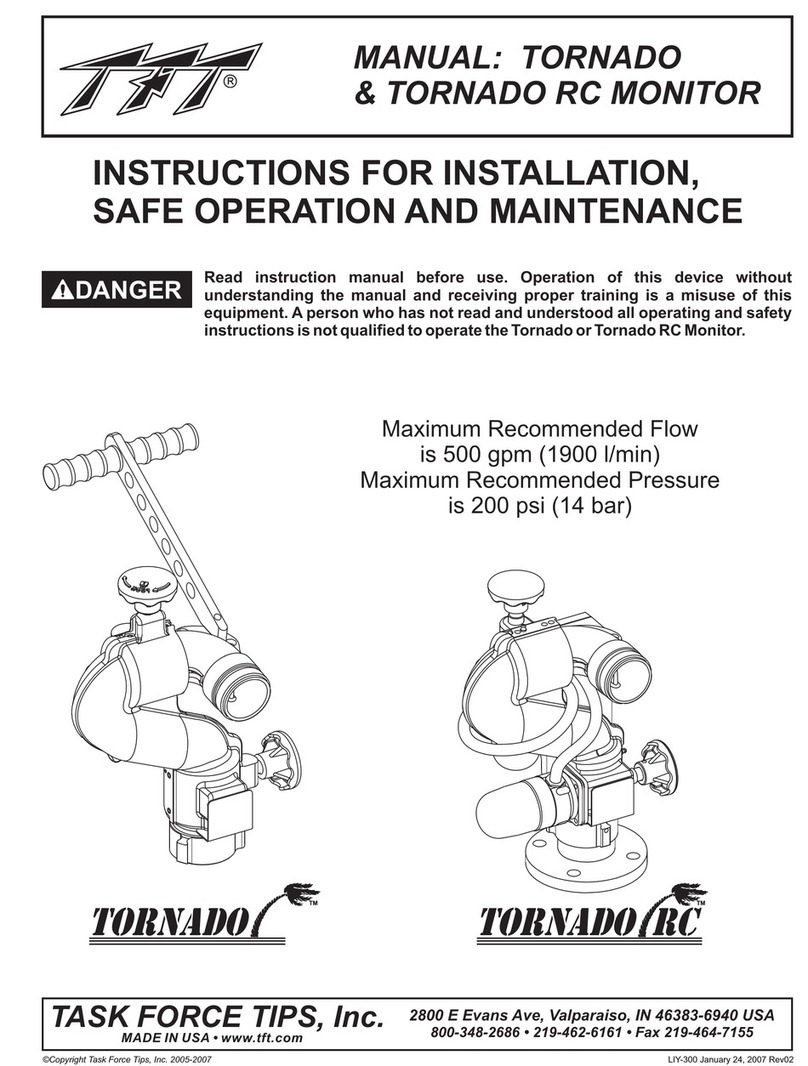
Task Force Tips
Task Force Tips TORNADO Programming manual
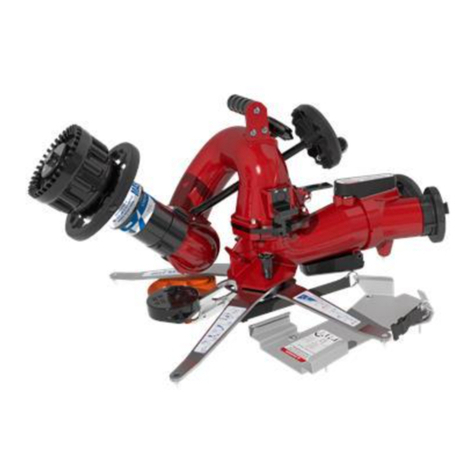
Task Force Tips
Task Force Tips CROSSFIRE User manual
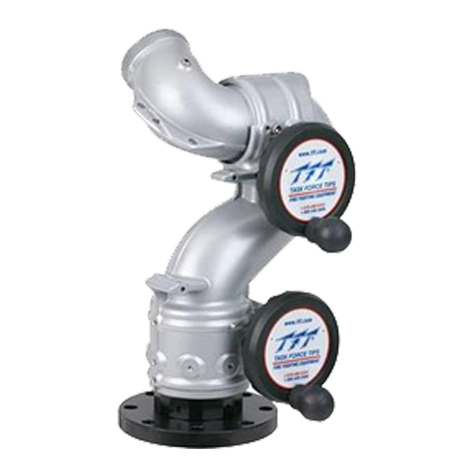
Task Force Tips
Task Force Tips Typhoon Series Programming manual
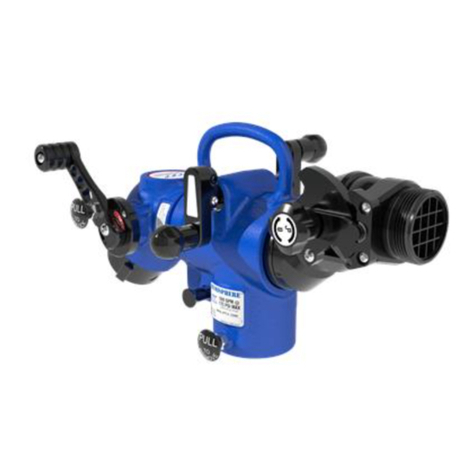
Task Force Tips
Task Force Tips HEMISPHERE Programming manual
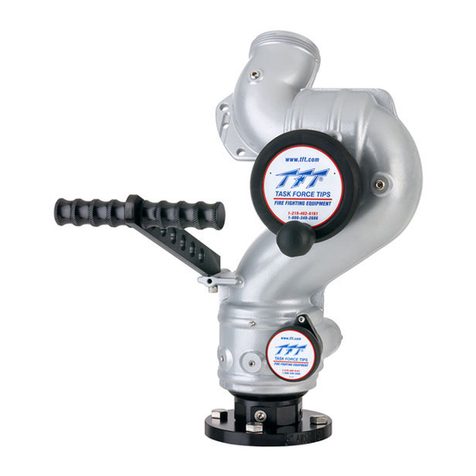
Task Force Tips
Task Force Tips LIY-250 Programming manual
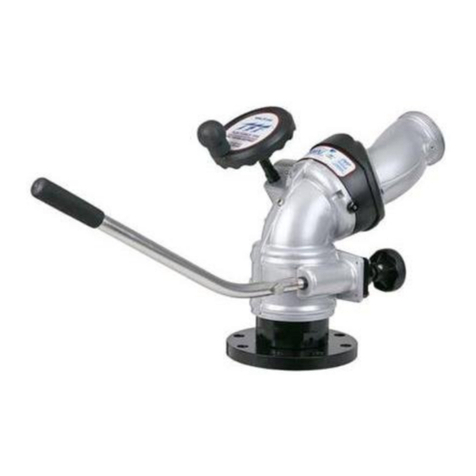
Task Force Tips
Task Force Tips MONSOON Series Programming manual
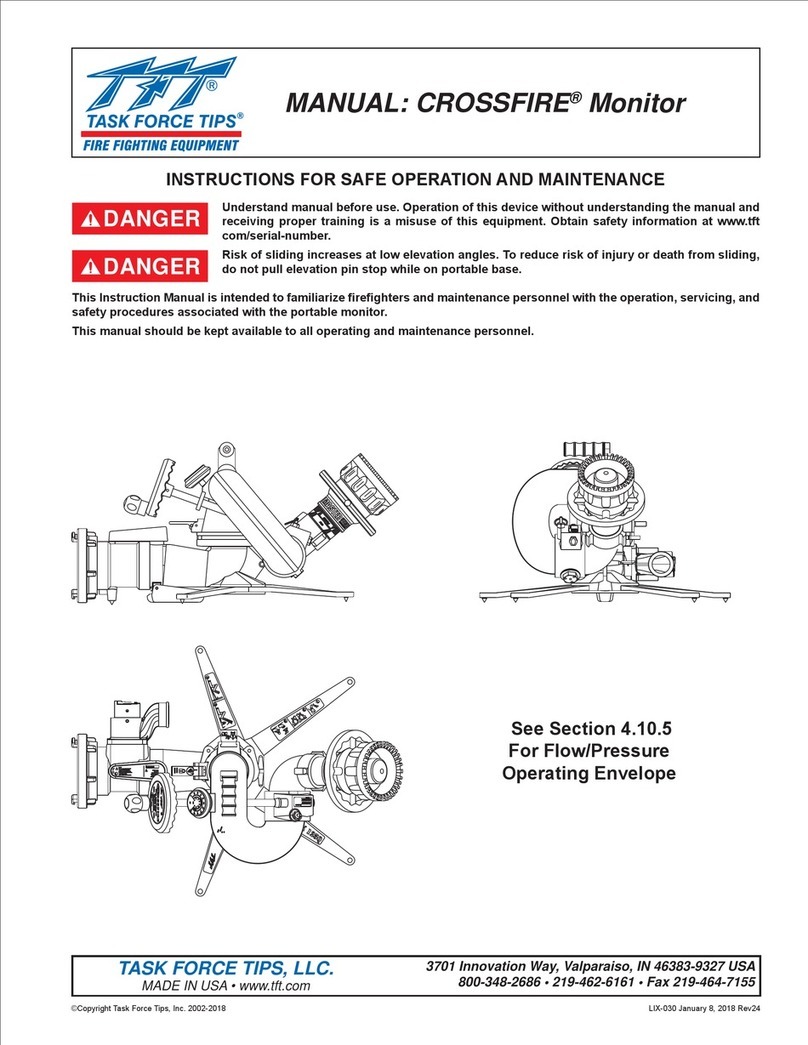
Task Force Tips
Task Force Tips SAFE-TAK 1250 Troubleshooting guide

